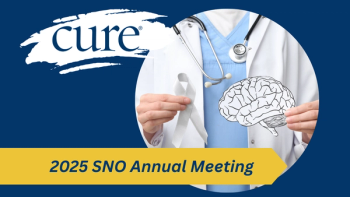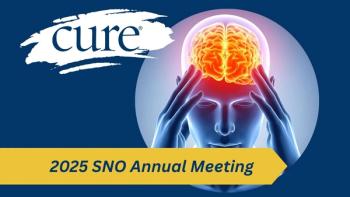
Gomekli Shows Early Activity in Pediatric Low Grade Glioma
Key Takeaways
- Gomekli showed an 87% overall response rate in pediatric low-grade glioma with MAPK pathway activation, with a recommended dose of 3 mg/m2 twice daily.
- Common adverse effects included weight gain, elevated CPK levels, and rashes, with manageable safety profiles and no reported retinal toxicities.
Early data from the SJ901 study show Gomekli generates responses with manageable side effects in children and young adults with low grade glioma.
Gomekli (mirdametinib) showed clinical activity with acceptable safety in children, adolescents and young adults with recurrent or progressive low-grade glioma (pLGG) with biopsy-proven MAPK pathway activation who had not been treated with a prior MEK inhibitor, according to findings from the phase 1/2 SJ901 trial, presented at the 2025 SNO Annual Meeting.
At a data cutoff date of September 23, 2025, the overall response rate (ORR) per Response Assessment in Pediatric Low-Grade Glioma radiological response criteria was 87%, including minor response or better (87%), partial response (PR) or better (55%), major response or better (26%), and complete response (6%). The median time to minor response or better was 6 months, and the median time to PR or better was 10.7 months.
Overall, the efficacy of Gomekli was seen in 36% of patients who received the agent at 2 milligram per square meter (mg/m2) or 2.5 mg/m2 and 46% of those who received it at 3 mg/m2. Therefore, the recommended phase 2 dose (RP2D) was identified to be 3 mg/m2 twice daily given orally and for continuous dosing based on the finding that only one patient out of 12 who received the agent at this dose level had a dose-limiting toxicity (DLT; grade 3 thrombocytopenia).
“We are very excited about the preliminary efficacy,” lead study author and presenter Dr. Anna Vinitsky, said in an interview with OncLive® during the meeting. Vinitsky is an associate member of St. Jude Faculty at St. Jude Children’s Research Hospital in Memphis, Tennessee.
Treatment-related adverse effects (TRAEs) that led to dose reductions (34%) included grade 3 (severe) weight gain (8 patients), grade 4 (life-threatening) elevated creatine phosphokinase (CPK) levels (2 patients), grade 3 elevated alanine aminotransferase (ALT) levels (1 patient), and decreased platelet counts (1 patient). TRAEs that led to treatment discontinuations (6%) included intolerable grade 2 rash (1 patient) and grade 4 elevated CPK levels (1 patient). AEs of special interest included asymptomatic grade 2 decreased left ventricular ejection fraction to less than 50% (3 patients); each had spontaneous resolution. Notably, investigators did not report retinal toxicities of any grade.
“We’re quite thrilled that patients are tolerating the drug well,” Dr. Giles W. Robinson, added in the interview. “They have some of the more customary AEs we see with MEK inhibitors, which are rashes, paronychia, or ingrown toenails. But these are relatively minor [AEs] that the patients learn to manage, or parents learn to manage for the patients.”
Robinson is a member of St. Jude Faculty, director of the Division of Neuro-Oncology, co-leader of Cancer Center Neurobiology and Brain Tumor Program in Memphis.
What was the rationale for the SJ901 trial of Gomekli in pLGG?
Although MEK inhibitors have shown promise as treatment for pediatric low-grade glioma, they often have limited penetrance to the blood-brain barrier and are often not available in oral formulations, according to the study authors. Gomekli, however, is an oral, selective, small-molecule MEK inhibitor that can penetrate the blood-brain barrier and can be administered in a dispersible tablet formulation that is more amenable for the needs of young children and patients for whom swallowing pills is a challenge. Gomekli was FDA approved in February 2025 for the treatment of adult and pediatric patients at least two years of age with neurofibromatosis type 1 (NF1) who have symptomatic plexiform neurofibromas (PNs) that are not amenable to complete resection.
Based on Gomekli’s mechanism of action, oral formulation, and efficacy in patients with NF1 PNs, investigators launched the SJ901 trial to investigate the agent in patients with pLGG.
What was the design of the SJ901 trial?
This multi-arm trial enrolled patients with pLGG at least 2 years of age but younger than 25 years of age. The phase 1 portion of the trial enrolled those with recurrent or progressive pLGG with biopsy-proven MAPK pathway activation (except in BRAF V600) who had no prior exposure to a MEK inhibitor. MAPK pathway activation was defied as BRAF fusions or rearrangements; FGFR1/2/3 aberrations; NF1, NF2, PTPN11, SOS1, RAF1 and RAS mutations; and MYB or MYBL1 fusions or rearrangements, all identified by immunohistochemistry, fluorescence in situ hybridization, and/or DNA/RNA sequencing.
Patients received Gomekli at 1 of 3 escalating dose levels (2 mg/m2, 2.5 mg/m2, or 3 mg/m2) twice daily on a continuous schedule over 24 months. An expansion cohort was designed to find the highest tolerated dose level, which would become the RP2D, in 12 patients. Once the RP2D was identified, an additional 12 patients were treated at this level to determine the efficacy of the agent across 24 total patients. The RP2D was defined as the dose that was associated with 3 or fewer DLTs in 12 patients; DLTs were defined as any toxicities that limited the administration of a given Gomekli dose within the first cycle of therapy.
The primary objectives of SJ901 were to explore the safety, tolerability, and preliminary efficacy of continuous Gomekli administration as well as to identify the RP2D of the agent.
What additional efficacy findings were reported from the SJ901 trial at SNO 2025?
Between June 2021 and September 2025, 35 total patients were enrolled to the phase 1, phase 1 expansion, and phase 2 cohort 2 portions of the trial. In the overall population, the median age at diagnosis was 8.3 years, and most patients were male (54%) and White (77%). Primary diagnoses included pilocytic astrocytoma (83%), diffuse glioma (6%), diffuse leptomeningeal glioneuronal tumor (3%), glioneuronal tumor (3%), and LGG not otherwise specified (6%). MAPK gene abnormalities were seen in BRAF (65%), FGFR1 (17%), MYB (3%), NF1 (9%), and RAF1 (6%).
At a median follow-up of 23.9 months, 83% of patients had completed or remained on therapy. In total, 17% of patients had discontinued therapy due to progression (4 patients; FGFR aberration, 2 patients; MYB fusion or rearrangement, 1 patient; BRAF fusion or rearrangement, 1 patient) and toxicity (2 patients; rash and increased CPK levels). Additionally, 9 patients progressed either on therapy (5 patients) or after completing therapy (4 patients).
“Patients [had] more than 50% reductions in the size of their tumor, which some of these tumors are quite large and are causing a lot of debilitating deficits in our patient population,” Robinson added. “When we see that [reduction], we also see that these patients are incredibly thriving.”
What additional safety findings have been reported with Gomekli in pLGG?
In total, the most common TRAEs included increased CPK levels (35 patients), increased aspartate aminotransferase levels (32 patients), dry skin (19 patients), acneiform rash (18 patients), anemia (16 patients), weight gain (16 patients), paronychia (15 patients), hair color changes (14 patients), increased ALT levels (12 patients), increased alkaline phosphatase levels (12 patients), decreased neutrophil counts (11 patients), maculopapular rash (11 patients), eczema (8 patients), hypoalbuminemia (8 patients), nausea (8 patients), diarrhea (7 patients), hypomagnesemia (7 patients), proteinuria (7 patients), decreased platelet counts (6 patients), skin and subcutaneous tissue disorders or other TRAEs (6 patients), fatigue (5 patients), and hypernatremia (5 patients).
What are the next steps for evaluating Gomekli in patients with pLGG?
Continued results will be shared from the trial as the data from this patient cohort mature, according to the study authors. Cohorts 1 and 3 of the phase 2 portion of the trial are enrolling newly diagnosed patients and those who have been previously treated with MEK inhibition, respectively.
“We would love to see this drug become a standard therapy in LGG,” Robinson concluded. “That is the direction we’re heading [in]. There needs to be more studies in looking at how does this drug fare with other MEK inhibitors, and how does it fare in comparison with what we consider standard of care? But to be honest, [from] treating patients and seeing patients in the clinic thriving on this therapy, it feels like they’re doing much better than what we’ve seen with standard chemotherapies. We are encouraged that this will become one of the therapies of the future for LGG.”
References
- “Efficacy and tolerability of mirdametinib (PD-0325901) in children, adolescents, and young adults with recurrent/progressive low-grade glioma: update from the SJ901 (NCT04923126) phase 1/2 clinical trial,” by Dr. Vinitsky A, Bag AK, Chiang J, et al. Presented at: 2025 SNO Annual Meeting; November 19-23, 2025; Honolulu, Hawaii. Abstract CTP-08.
- “FDA approves mirdametinib for adult and pediatric patients with neurofibromatosis type 1 who have symptomatic plexiform neurofibromas not amenable to complete resection.” FDA. February 11, 2025. Accessed November 21, 2025.
https://www.fda.gov/drugs/resources-information-approved-drugs/fda-approves-Gomekli-adult-and-pediatric-patients-neurofibromatosis-type-1-who-have-symptomatic
For more news on cancer updates, research and education,





